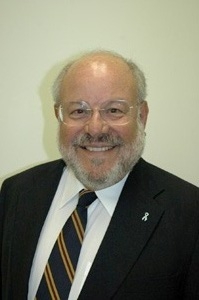BNL was using a 75-foot-long landing craft on loan from the Navy, a chartered Cessna plane and a trawler. Clouds of smoke were sent up at sea. Doing investigative reporting for the daily Long Island Press, I pursued the floating nuclear plant story for years.
The scheme was conceived while a vice president of Public Service Electric and Gas Co. of New Jersey, Richard Eckert, was taking a shower, according to company literature. It spoke of Eckert having a revelation while showering of the sea supplying the massive amounts of water nuclear plants need as coolant. The utility convinced Westinghouse to build floating nuclear plants. Westinghouse and Tenneco set up Offshore Power Systems to fabricate them at a facility constructed on Blount Island off Jacksonville, Florida. The plants were to be towed into place. But the project was scuttled because of skyrocketing costs, public opposition and lack of need. In 1984, Offshore Power Systems dissolved after $180 million was spent on the failed venture.
The most comprehensive analysis done on the floating nuclear power plants Russia is now building is a book researched and written by a team of Russian scientists and titled: Floating Nuclear Power Plants in Russia: A Threat to the Arctic, World Oceans and Non-Proliferation. Its authors include nuclear physicists and engineers and noted biologist Dr. Alexey Yablokov.
"One would have imagined that the Chernobyl catastrophe would have taught us to treat nuclear technologies with caution," the book begins. It says "trouble-free operations of floating nuclear power plants cannot be" and "the only question is how serious the emergency and its consequences." In a chapter on the plants as "an attractive object of nuclear terrorism," the book cites an impossibility of providing "protection from"underwater saboteurs and on the surface from a rocket-bombing strike." Further, the "spreading" of the floating plants "all over the world will allow" this to be done "much easier and with more efficiency." Each floating nuclear plant will contain "the ready material for ten nuclear bombs in the way of enriched uranium of weapon quality."
It notes "the idea of creating floating nuclear power plants originated in the USA" but was dropped and recommends Russia do the same.
The floating nuclear plant scheme is backed by Prime Minister Vladimir Putin "as part of a program to raise the portion of Russian electricity generated by nuclear power." http://www.theresilientearth.com/?q=content/russia-ring-arctic-floating-nuclear-plants
Kiriyenko, Rosatom's director general, also was Russia's prime minister--but only briefly, from March to August 1998. He was forced to resign for his role in financial machinations that led to a devaluation of the Russian ruble and a major financial crisis. He was appointed to head Rosatom in 2005.
There is strong opposition in the area off which the first floating nuclear plants would be moored--the Murmansk Region. The Romir polling agency has found some 71 percent of respondents there said they were "strongly negative." And, "protests against the project have already occurred," says Vitaly Servetnik, chairman of the organization Nature and Youth.
http://www.bellona.org/articles/articles_2008/floatingnukes_poll?printerfriendly=yes'
Of the floating nuclear plants, Vladimir Chuprov, energy projects chief for Greenpeace Russia, says: "It is better to invest in solar and wind energy rather than produce time bombs." Indeed, there are plans now proposed for the U.S. mid-Atlantic, not far from where Atlantic 1, 2, 3 and 4 were to go, for offshore wind farms. They would safely and cleanly harvest the power of the wind.
That's a good U.S. initiative that Russia should emulate.
.
(Note: You can view every article as one long page if you sign up as an Advocate Member, or higher).





